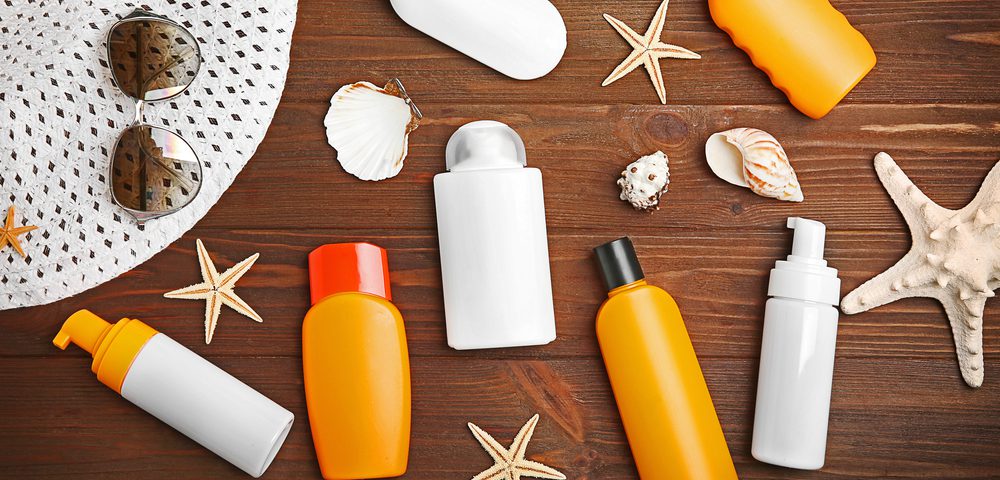Trends in the Global Market
The global sunscreen ingredients market is projected to reach 40,000 Tonnes by 2020 with an overall increase in demand of 10,000 Tonnes by 2020. Seventy percent of the global demand is currently concentrated within ten countries and the USA was leading the market with a demand of 9,600 Tonnes in 2015 followed by Brazil – 3,200 Tonnes – and China – 2,500 Tonnes -. Although North America will remain the largest market in the forecast period (2015-2020), it is expected to lose 6% of its market share as emerging markets, especially in Asia-Pacific, are gaining momentum.
Sun protection products and products claims depend on the specific market due to the diverse regulatory landscape and different consumer needs and preferences across the globe. Fewer products in the US have UVA coverage due to its more restrictive regulation, while in Asia Pacific half of the UV filters used in sunscreens are broad spectrum (UVB + UVA). Despite demand for mineral filters is expected to grow in the forecast period driven by consumer demand for more natural ingredients and recent technical developments, still ninety percent of the UV filters used in North America, Western Europe and Latin America are organic filters while thirty-five percent of the UV filters used in Asian products are inorganic, mainly zinc oxide.
Consumers Want More
Although consumer’s preferences vary across the world, there are some common trends. Consumers demand more protection against all environmental aggressors such as UV radiation, pollution, infrared and blue light. This translates into higher SPF, which usually implies a higher number of UV filters and the use of botanicals, vitamins and film forming polymers able to protect the skin. Consumers also expect non-sticky or whitening lighter textures that offer longer lasting protection during sport and water activities even in warm and humid climates. As a result, greater innovation in synthetic polymers and higher demand for lighter emollients is expected to continue during the next five years. Mildness, convenience and added benefits are also among the top consumer’s preferences which is driving demand for skin conditioning and benefiting agents, milder surfactants, alcohol and waxes.

Opportunities for Ingredients in Western Europe
Consumers are demanding products with higher protection and UV filters are the basic ingredients able to provide this protection. Among all UV filters, homosalate is expected to be the fastest growing in Western Europe between 2015 and 2020, followed by zinc oxide and ethylhexyl methoxycinnamate. Although homosalate itself is not able to provide high SPF, it is an affordable and globally accepted UV filter that can be used in high proportions (up to 10% in Europe and 15% in the United States) and it is usually combined with other filters due to its high compatibility to reach high protection in mass market products. It is a liquid filter able to dissolve and stabilise solid filters such as avobenzone, one of the most used UVA filters. Demand for mineral filters, although smaller than demand for organic filters, is also expected to grow especially in the case of zinc oxide due to its recent approval as UV filter in Europe.
Besides sunscreens, especially emollient esters but also alcohol are two ingredients that present big opportunities for growth by 2020. Light emollient esters with similar silky skin feeling to silicones but with the added benefit that they do not clog the pores and also solubilize some of the solid UV filters, are gaining popularity among formulators. Vitamins present relatively small opportunities for growth in terms of volume – around 300 Tonnes – in the forecast period (2015-2020). Mainly panthenol and vitamin E are the vitamins that are projected to be most favoured. Last but not least, there are further opportunities for growth for other ingredients such as waxes, ascorbic acid, peptides, plant extracts and niacinamide.
Innovation: Now More than Ever
The need for innovative ingredients and formulations is vital to meet consumers demand. In response, companies are actively looking for solutions to overcome these challenges. Companies are broadening their focus to fight not only the effects of UV radiation but also air and light pollution. Lancaster has just launched its Full Light Technology which protects against UVB, UVA and infrared rays and has just re-launched its sports sunscreen’s range with intelligent polymers that release menthol when exposed to water, sweat or heat. Happy Skin has just launched its Catch the Sun Brightening UV Gel Cream in the Philippines, a water-based gel cream with moringa seed oil that protects against UV rays pollution.
Besides formulations that offer further protection, some interesting products are the Dr Russo Cleansing Milk SPF 30 with three encapsulated UV filters, the UVO edible sunscreen with vitamins and antioxidants, the UNSUN Natural Tinted Sun Protection line for multicultural consumers, or even the recent launch of the brand Suncros, a pharma-derived sunscreen line, which is now directly selling to consumers in India.
Ingredients manufacturers are also responding by developing solutions. For instance, Covestro has launched a high waterproof, ethanol-based polyurethane film former – Baycusan® C 2000 – for transparent sun protection and innovative textures with an SPF-boosting effect, which dries quickly and can be applied to wet skin.
Not only formulation is important but education and proper application are fundamental. Aware of this, cosmetics companies are launching wearable UV trackers such as the L’Oréal’s UV Patch or the Norwegian SunSense technology.
The sunscreen market has evolved tremendously during the last decade but there is still plenty of room for innovation to discover and develop healthier, safer and more effective ingredients and formulations that effectively protect the skin, with added skin benefits and more attractive textures that are easy to apply.
Read an extract of Maria’s presentation at in-cosmetics Global on Slideshare http://bit.ly/2qCulXV.
Receive Euromonitor International’s Ingredients insights in your inbox http://blog.euromonitor.com/.

